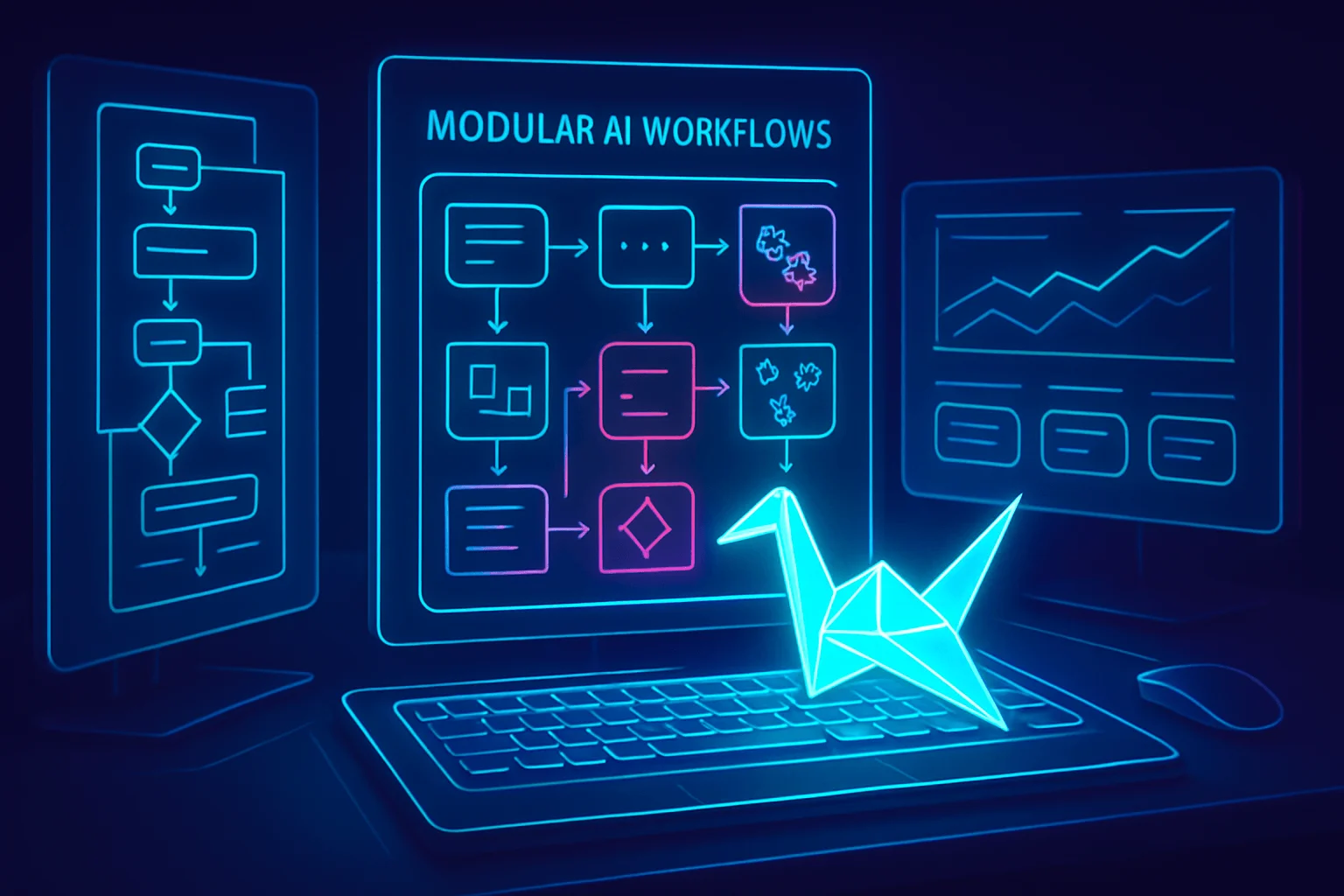Uncovering the Truth About AI in Business for Smarter Growth

Imagine making a business decision with the clarity of hindsight—choosing the right investments, anticipating customer needs, or spotting inefficiencies before they become costly. This promise sparked the current rush toward artificial intelligence in business, yet skepticism abounds. Is AI truly as transformative as claimed, or does it introduce more confusion than clarity? In today’s hyper-competitive marketplace, understanding what AI can and cannot do is crucial for leaders who can’t afford missteps rooted in myths. In this post, we cut through the hype to debunk the most pervasive misconceptions about AI-driven decision making. You’ll discover how to distinguish fact from fiction, the real competitive advantages smart businesses gain through AI, and practical keys for leveraging technology to drive strategic growth. Whether you’re navigating early adoption or refining advanced tools, this guide will equip you with the nuanced insight needed to harness AI with confidence—and achieve smarter, stronger outcomes.
Myth #1: AI-Driven Decisions Replace Human Judgment Entirely
In the popular imagination, AI is often painted as an autonomous super-brain capable of taking over all decision-making tasks—rendering human insight obsolete. Many business leaders worry that adopting AI means relinquishing control, fearing the loss of valuable intuition, experience, and context that only humans possess.
How it happens:
- Marketing hype highlights AI as “self-sufficient” or “autonomous,” overshadowing human collaboration.
- Automation anxiety drives the perception that “smart” systems require minimal oversight.
- Misunderstandings of AI’s capabilities—especially regarding context, culture, and nuance.
- Vendor promises, suggesting that “set-and-forget” AI will outperform human teams.
The Truth:
AI augments, not replaces, human expertise. The strongest results emerge when human managers interpret and contextualize AI-generated insights, using them to enrich—not override—their judgment.
Case Study: Heineken’s Supply Chain Optimization
Beverage giant Heineken enlisted AI to streamline its complex global supply chain. While the AI provided forecasts and identified inefficiencies, final decisions about routing, purchasing, and risk were made by experienced supply chain managers. These professionals combined AI outputs with knowledge of supplier relationships, seasonal events, and local regulations. The result? Reduced costs and improved responsiveness during disruptions—proving that human oversight remains essential for nuanced, high-stakes choices.
Myth #2: AI Is Only for Large Enterprises with Massive Data
Another common misconception is that meaningful AI applications demand “big data” and equally big budgets—that only giants like Google or Amazon can afford to develop or benefit from AI-powered decision making. As a result, small and medium-sized businesses (SMBs) often self-exclude, assuming AI isn’t relevant to their scale or resources.
How it happens:
- Media focus on enterprise AI deployments overshadows smaller scale success.
- Historical barriers: Early AI was resource-heavy and expensive, but technology has rapidly evolved.
- False equations: “AI = Big Data”; ignoring the value of qualitative or smaller, curated datasets.
- Complexity fears: SMBs worry about the technical skills and costs required for AI implementation.
The Truth:
Modern AI tools are more accessible, affordable, and adaptable than ever. Off-the-shelf platforms, cloud services, and user-friendly interfaces now put AI-driven decisions within reach for companies of all sizes—often with minimal investment or data requirements.
Case Study: Lavande Boutique Hotels
Lavande, a growing mid-size hotel chain in China, used a cloud-based AI platform to optimize pricing, inventory, and guest personalization. With moderate historical data and no large IT team, Lavande reached higher occupancy rates and more effective upselling—demonstrating that strategic AI doesn’t depend on mega-scale resources.
Myth #3: AI Decisions Are Always Impartial and Objective
Because AI is built on algorithms and mathematical models, there’s a widespread belief it’s free from human biases. Many organizations view AI-driven decisions as inherently “fair”—a black box that won’t be swayed by emotions, prejudices, or politics.
How it happens:
- Trust in math: Algorithms are seen as “neutral” by default.
- Blindness to data bias: Overlooking how historical and training data can perpetuate or amplify discrimination.
- Opacity of AI models: Lack of explainability, reinforcing the belief in objectivity.
- Techno-optimism: Overconfidence in technology’s ability to “fix” human failings.
The Truth:
While AI can identify and reduce some biases, it’s also capable of replicating or even amplifying them—especially if the input data is skewed. AI must be monitored, validated, and corrected by humans to ensure ethical and objective outcomes.
Scenario: AI Recruiting Tools at a Global Tech Firm
A global tech company adopted an AI-powered recruiting tool to screen candidates. The tool, trained on past hiring data, began favoring applicants with resumes that mirrored existing employee profiles—unintentionally downgrading candidates from diverse backgrounds. Upon review, the company retrained the AI using a broader, more representative dataset, and added regular human audits. The lesson: unchecked, AI can “learn” and perpetuate systemic biases unless it’s actively managed.
Myth #4: Implementing AI Is a One-Time Project
It’s tempting to think of AI as a plug-and-play solution: deploy a tool, reap the benefits, and move on. This mindset leads many organizations to treat AI implementation as a discrete, finite task—handled by IT or innovation teams, and then considered “done.”
How it happens:
- Project mentality: AI initiatives are budgeted and scheduled like software upgrades.
- Underestimating change management: Assuming the hard work ends once the system is live.
- Neglecting continuous learning: Forgetting that AI models degrade without new data and feedback.
- Vendor messaging: Overpromising simplicity and downplaying the need for ongoing integration.
The Truth:
AI is a journey, not a destination. Effective AI deployments require ongoing monitoring, training, feedback, and cross-functional collaboration. Sustained strategic benefit comes from integrating AI into daily workflows and continually adapting as the business and its environment change.
Case Study: Domino’s Pizza’s Customer Experience AI
Domino’s invested in AI to power its conversational ordering bots and personalize customer experiences. The company quickly learned that language models needed continuous updates in response to slang, menu changes, and user expectations. Ongoing collaboration between tech, marketing, and frontline staff became vital to keep the AI delivering value. Domino’s now views AI as a living capability—part of its core business maturation strategy, not a box-checking exercise.
FAQs
Q1: How do I start using AI-driven decision making if my company lacks in-house AI expertise?
A:
Start by identifying core business areas—such as sales forecasting, inventory, or customer insights—where better decisions could drive tangible value. Explore cloud-based AI platforms (like Microsoft Azure AI, Google Cloud AI, or Salesforce Einstein) featuring intuitive interfaces and built-in “wizards” for common business scenarios. Pilot a specific, well-defined use case; most providers offer onboarding support and low-risk proof-of-concept packages. As you scale, consider hiring or upskilling “citizen data scientists” internally—a staff member in analytics or operations who can bridge business needs and technical tools.
Q2: What key safeguards should we have in place to ensure ethically sound AI-driven decisions?
A:
Establish a cross-functional AI ethics committee that includes diverse viewpoints (not just IT). Regularly audit AI models for problematic biases or unintended consequences—using open-source tools like IBM AI Fairness 360 or Google’s What-If Tool. Develop transparent, explainable AI processes so business leaders can understand the rationales behind critical decisions. Finally, create feedback loops: Invite employee, customer, or partner input to flag unexpected issues, then adjust your AI models accordingly.
Q3: How can we keep our AI systems relevant as our business grows and changes?
A:
Make AI model retraining a routine part of your business process—schedule regular reviews where new business data (e.g., from expansion, product launches, or shifting markets) is fed into the system. Align this process with your strategic planning cycles. Additionally, document lessons learned, both successes and failures, and update your operating procedures so new team members inherit a culture of data-driven improvement. Leverage vendors that offer ongoing support and customization, and don’t shy away from investing in continuous education for your team.
Key Truths
-
Human expertise and AI are strongest together: The most effective AI-driven organizations foster a culture where people interpret, validate, and act upon AI insights rather than blindly following algorithmic recommendations.
-
AI isn’t reserved for the tech giants: SMBs can and should pilot AI by starting small—leveraging cost-effective, cloud-based services for business-critical functions like customer segmentation, scheduling, and demand forecasting.
-
Data quality > data quantity: Well-curated, relevant, and representative data (even in small amounts) can fuel powerful results, especially when paired with domain knowledge and continuous feedback loops.
-
Bias risk persists: AI inherits the biases present in its training data. It’s essential to audit, monitor, and retrain models routinely, ensuring diverse oversight and transparency in every application.
-
Continuous integration is key: Treat AI as an evolving capability that requires periodic retraining, updating, and integration with new business processes, data sources, and strategic objectives.
-
Empower your workforce: Upskill employees with “AI literacy”—focus on business impact, not just tools—so teams can confidently collaborate with technology and spot opportunities or pitfalls early.
-
Ethics and explainability matter: Embed ethical review and explainability requirements from day one; transparency builds internal and partner trust, reducing resistance and risk.
-
AI thrives on feedback: Establish clear mechanisms for capturing stakeholder (customer, employee, partner) input post-decision, using real-world reactions to continuously hone and improve model accuracy and relevance.
-
Choose strategic use cases: Prioritize AI initiatives that align with your core business strategy and bottom-line metrics, rather than chasing hype or generic applications.
-
Select vendors and partners wisely: Favor those who don’t just sell you tools but offer long-term support, education, and guidance for sustained, business-aligned growth.
As we’ve explored, separating fact from fiction when it comes to AI-driven decision making is crucial for any business leader determined to grow smarter, not just bigger. By addressing common misconceptions—from fears of job loss to concerns about cost and complexity—we’ve highlighted how AI, when used thoughtfully, can enhance rather than hinder human expertise. The real advantage lies in using AI as a collaborative partner, boosting efficiency, reducing bias, and uncovering new opportunities for innovation and strategic growth. Now, as you consider your own organization’s AI journey, remember to focus on purposeful adoption, continuous learning, and open communication. We invite you to share your thoughts, experiences, or questions below—let’s keep this important conversation going as we all aim to make smarter business decisions together.



